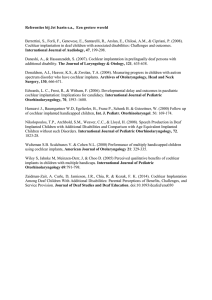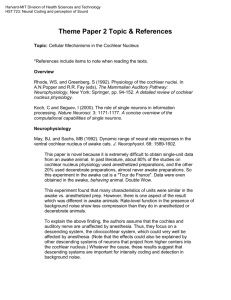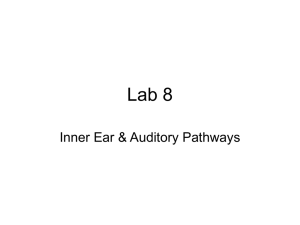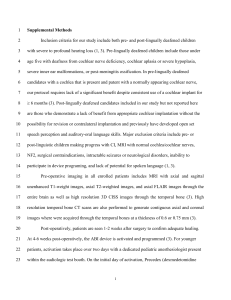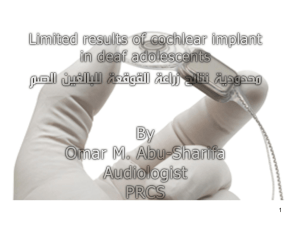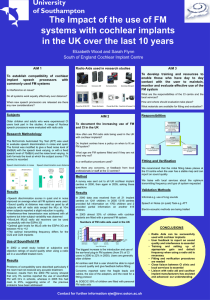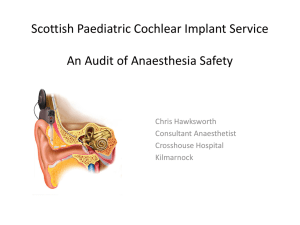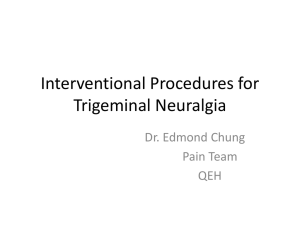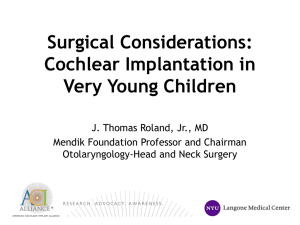Surgical information on ABI placement (additional digital supplement)
advertisement
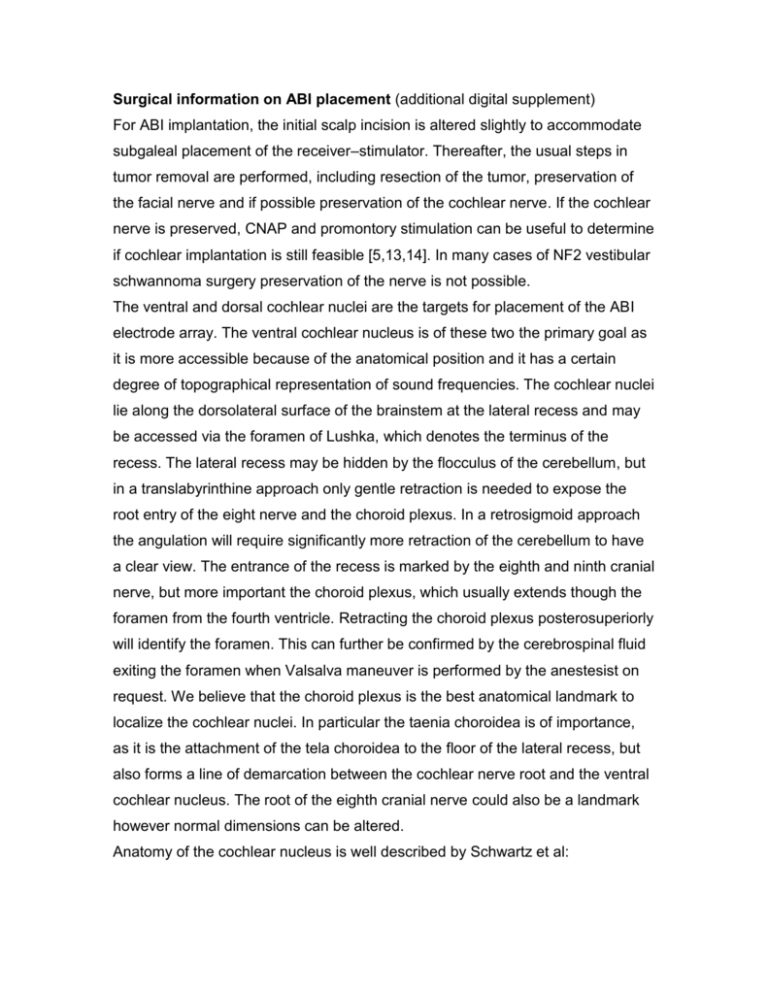
Surgical information on ABI placement (additional digital supplement) For ABI implantation, the initial scalp incision is altered slightly to accommodate subgaleal placement of the receiver–stimulator. Thereafter, the usual steps in tumor removal are performed, including resection of the tumor, preservation of the facial nerve and if possible preservation of the cochlear nerve. If the cochlear nerve is preserved, CNAP and promontory stimulation can be useful to determine if cochlear implantation is still feasible [5,13,14]. In many cases of NF2 vestibular schwannoma surgery preservation of the nerve is not possible. The ventral and dorsal cochlear nuclei are the targets for placement of the ABI electrode array. The ventral cochlear nucleus is of these two the primary goal as it is more accessible because of the anatomical position and it has a certain degree of topographical representation of sound frequencies. The cochlear nuclei lie along the dorsolateral surface of the brainstem at the lateral recess and may be accessed via the foramen of Lushka, which denotes the terminus of the recess. The lateral recess may be hidden by the flocculus of the cerebellum, but in a translabyrinthine approach only gentle retraction is needed to expose the root entry of the eight nerve and the choroid plexus. In a retrosigmoid approach the angulation will require significantly more retraction of the cerebellum to have a clear view. The entrance of the recess is marked by the eighth and ninth cranial nerve, but more important the choroid plexus, which usually extends though the foramen from the fourth ventricle. Retracting the choroid plexus posterosuperiorly will identify the foramen. This can further be confirmed by the cerebrospinal fluid exiting the foramen when Valsalva maneuver is performed by the anestesist on request. We believe that the choroid plexus is the best anatomical landmark to localize the cochlear nuclei. In particular the taenia choroidea is of importance, as it is the attachment of the tela choroidea to the floor of the lateral recess, but also forms a line of demarcation between the cochlear nerve root and the ventral cochlear nucleus. The root of the eighth cranial nerve could also be a landmark however normal dimensions can be altered. Anatomy of the cochlear nucleus is well described by Schwartz et al: “The ventral cochlear nucleus serves as the main relay between the afferent cochlear input and the ascending auditory pathways. As such, it is the main target for stimulation by the electrode array. This nucleus lies at the most lateral portion of the lateral recess (at the foramen of Lushka) superiorly and slightly anteriorly. It may be useful to think of the foramen as a clock-face with 12 o’clock superiorly. For right-sided implantation, the nucleus is found at about 1 o’clock. Once again, however, distortion by tumor may alter this relationship.” [11]. After preparing a well in the temporal skull bone to properly seat the receiverstimulator, non-resorbable tie-down sutures are applied to fix the implant completely. Subsequently, the electrode array is carefully inserted into the lateral recess overlying the presumed site of the cochlear nucleus complex. After checking the correct position of the ABI, fibrin glue and a piece of fascia are used to further secure the array in position. To further reinforce its stability and prevent CSF leakage long strips of abdominal fat are used to close the dural defect. Many other precautions are taken to prevent a possible CSF leak postoperatively as described recently [15]. The ground electrode is placed on the skull medial to the temporalis muscle and the wound is closed in a watertight fashion in several layers. Postoperative care NF2 patients undergoing ABI placement differs little from that of the typical patient undergoing a translabyrinthine approach for resection of vestibular schwannoma alone; however, because these patients have NF2, other pathology may be of concern. In case of pathology affecting the contralateral lower cranial nerves, careful assessment of airway protection and swallowing is mandatory. A higher incidence of aspiration and dysphagia in this group of patients than in the vestibular schwannoma population as a whole is observed. In contrast to other reports [11], we have not seen an increased risk of cerebrospinal fluid leak and meningitis in this group, most likely as a result of the thorough watertight closing procedure [15].

